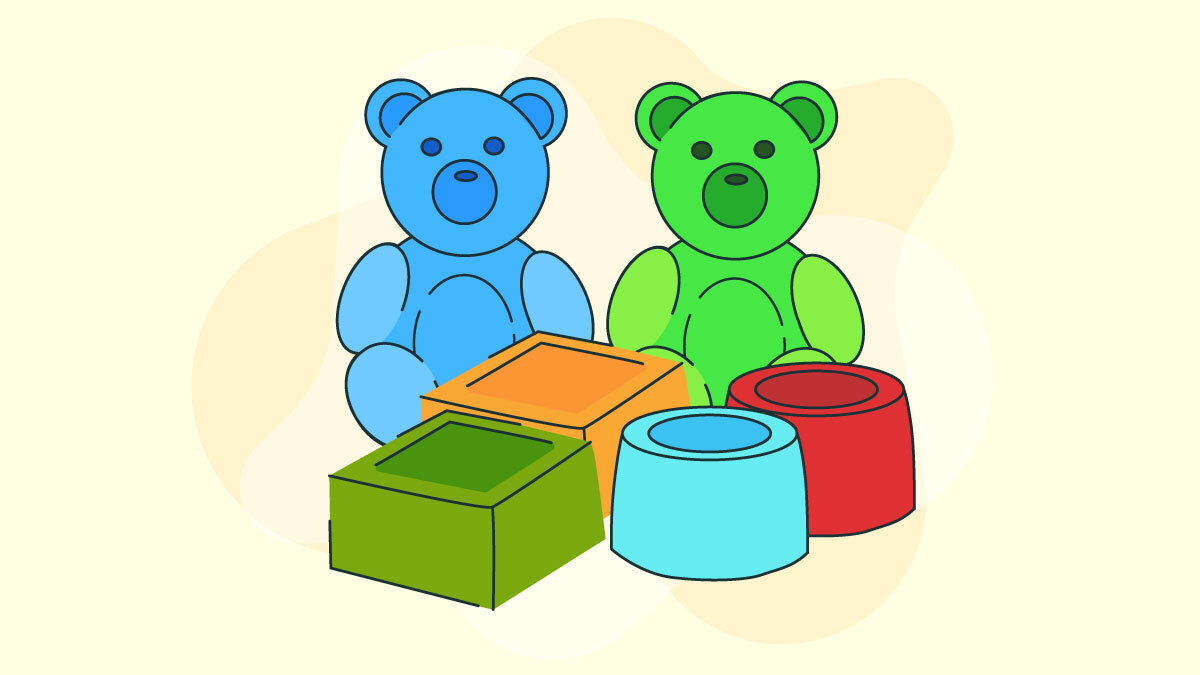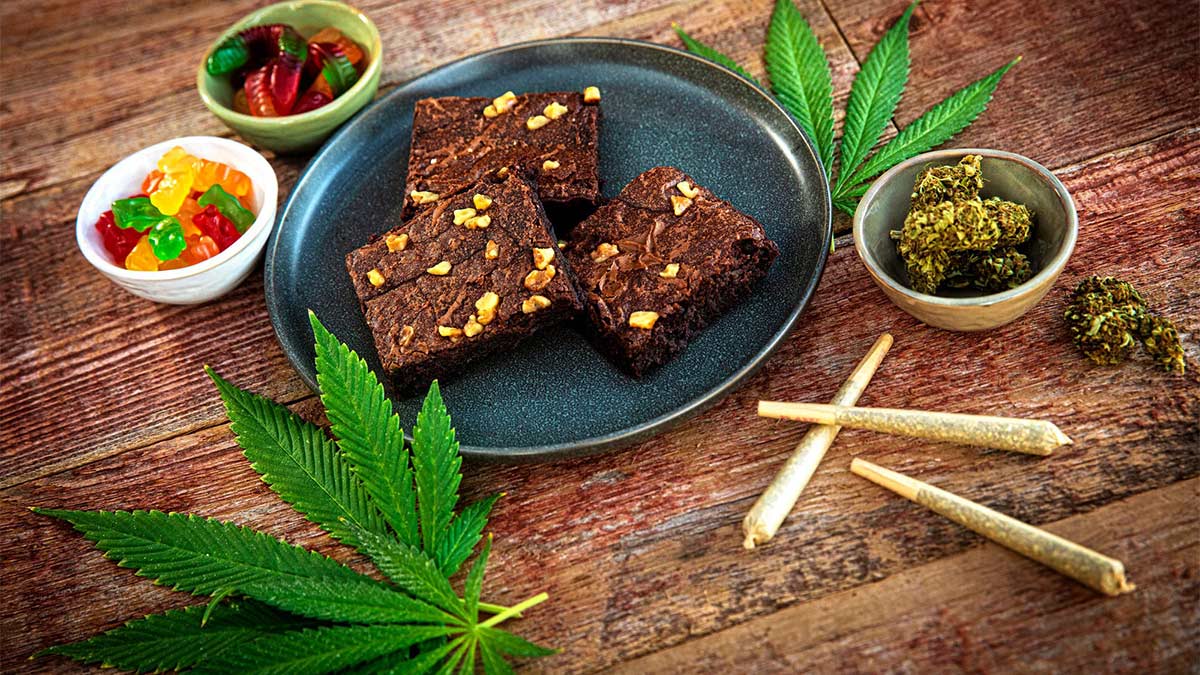What Are The Effects of Weed Brownies?

You’re not the only one who enjoys edibles (or is thinking about enjoying them). Your parents – and depending on your age, your grandparents – probably enjoyed them too.
In fact, putting marijuana into food or drink is nothing new. 4,000 years ago, some Hindu communities in India began celebrating the festival of Holi with a rosewater drink infused with cannabis. It’s called bhang, and it’s still drunk today. Edibles were also popular in relatively more-recent cultures, ranging from the Berbers in North Africa to several in medieval Europe.
And the first American recipe for weed brownies was published in The Alice B. Toklas Cookbook in the 1960s, although the delicacy was originally called “Hashish Fudge.” The counterculture movement of the time picked up on the idea immediately, and it was common to see hash or weed brownies at parties during the 1960s and 70s. (For the sake of completeness, the cookbook was first published in the 1950s, but early American versions omitted the “scandalous” recipe.)
Even if you’ve never heard about these brownies before, you can certainly guess the major weed brownies effect: they get you high.
Before you give them a try, though, there’s much more you should know.
Making Weed Brownies

Those who live in “legal states” can find weed brownies and other edibles at their local dispensary. They’re also easy to make at home, although they take more time to prepare than their “straight” counterparts.
Generally speaking, the only difference between the two is the butter or oil used in their recipes. Pot brownies are made with cannabutter or cannabis oil, which are simply ordinary butter or oil infused with marijuana. You can purchase cannabis oil in dispensaries, but it’s not hard to make the infused oil or butter on your own.
The “extra ingredient” required is time because weed can’t be thrown right into brownie batter. Here’s why. Buds don’t contain THC when they’re fresh off the plant; they contain its precursor, non-psychoactive THCA. THCA turns into THC when it’s heated, so smoking or vaping weed does the job automatically.
When you’re going to add flowers to edibles, however, it won’t make you high unless it’s been heated and the THC has been activated. That process is called decarbing (short for decarboxylation), and it simply requires putting weed into the oven at low heat. But decarbing takes an extra 30-45 minutes before you can mix the decarbed cannabis with butter or infuse the oil with it. Once that’s done, you’re ready to make and enjoy weed brownies.
But you have to be careful while eating them.
Smoking vs. Weed Brownies
No matter how you consume cannabis, the psychoactive and medicinal effects of the cannabinoids it contains are basically the same.
However, smoking and eating edibles will each hit quite differently – primarily because of the way that the body absorbs and processes psychoactive THC.
Smoking Weed
When you smoke, the body begins processing THC almost immediately. After smoke hits the lungs, it takes only seconds for the active compounds in marijuana to make their way into the bloodstream. The THC travels throughout the body and binds to endocannabinoid receptors, causing the mood-altering and medicinal effects that weed is known for.
Most importantly, it reaches ECS (endocannabinoid system) receptors in the brain, which are responsible for creating the euphoric effects of THC. That entire process takes just seconds, which is why you can get high soon after your first toke.
Eating Edibles
It takes much, much longer for the body to metabolize and use THC after it’s been eaten.
First, the food containing cannabis passes through the digestive tract and reaches the stomach, where it must be digested. It takes a while before the weed’s active components can be released, and after that, they’re sent to the liver. The liver then turns much of the THC into a different metabolite, 11-hydroxy-THC, before it’s released into the bloodstream and can eventually make its way to the ECS receptors in the brain.
That long process makes a big difference.
For one thing, it usually takes anywhere from an hour to two hours before the edible is “turned into” psychoactive 11-hydroxy-THC and it can take effect. During that time, you’re not getting stoned – you’re just waiting to get stoned.
Here’s the other big difference. 11-hydroxy-THC (also known as 11-OH-THC) is more powerful than THC, and its effects last longer. In simple terms, weed brownies can get you higher than smoking, and you’ll ordinarily stay higher for a longer period of time. The peak effects of smoking marijuana last only 20-30 minutes. For edibles, the full effects don’t kick in until several hours after they’ve been consumed, and you may stay high for another 6-8 hours after that.
The long duration of edibles’ effects isn’t just something that stoners can appreciate. It’s a godsend for many medical patients; they may have to wait quite a while to feel pain relief, but they’ll then experience that relief for substantial periods of time without having to continually smoke up or vape.
However, the extra psychoactive power of edibles, and the time it takes to hit, can cause an unwanted effect.
Possible Problems When You Eat Weed Brownies
No one takes a bite of a weed brownie and then waits 1-2 hours to see how it hits them and whether they want to take another bite. When you have an edible, you eat it – and an hour or two later, you start to find out whether you may have eaten too little or too much.
That can pose a big problem, which is familiar to anyone who likes sweets. If you’re trying tasty weed brownies or other edibles for the first time, it’s easy to consume way too much – particularly since the high will be much stronger than smoking when it finally hits. Some people also give in to the temptation to have “another one” after they don’t feel any effects after 30 minutes or an hour.
And if you’ve made your own, it’s hard to know exactly how much THC you’re putting into your system. One batch may be more powerful than the last. (Edibles from dispensaries will have THC content information on the label.)
Bottom line: It’s really easy to overdo it with edibles. You can eat too much initially, or you can take a second helping in an effort to “get high already.” Either way, you could end up much more blazed than you had planned; those who have anxiety issues and low tolerance could actually end up having a psychotic reaction from the effects of the powerful 11-hydroxy-THC.
That’s why the advice “start low, go slow” is particularly appropriate for weed brownies or edibles. Your body will tell you when it’s time to put the pipe or bong down. The weed brownies effect takes much longer – and by the time you know that you’ve had enough, you may already have had too much.
The Weed Brownies Effect FAQ
Q: How much THC should ideally be in a weed brownie?
A: That question is impossible to answer in a few sentences because it depends on your tolerance, your experience, and the effects you’re hoping to achieve. Five milligrams is considered a “standard dose” for those who aren’t new to cannabis; 2.5mg or less is better for novices. Higher levels of 10-15mg are suitable for those who are experienced users or those treating moderate pain; 20-30mg is for getting wasted or treating serious pain. 40mg and higher is too much for most people.
Q: How can I know how much THC is in brownies that I bake at home?
A: There are somewhat-complicated formulas that you have to use (and can be found in other articles we’ve posted) because some of the THC in weed will be lost during decarbing and more will be lost when you use the decarbed buds to make butter or oil. A much easier way to go about it is to buy from a dispensary because the brownies or edibles will be clearly labeled.
Q: How much stronger is 11-OH-THC than regular THC? Can you get any by smoking?
A: One research study comparing 11-OH-THC with Delta-9 THC (what we usually think of as “normal” THC) found that the metabolite produced after consuming edibles is 2-3 times more potent. A small amount of 11-OH-THC is also produced when you smoke weed, but not enough to be noticeable or important.